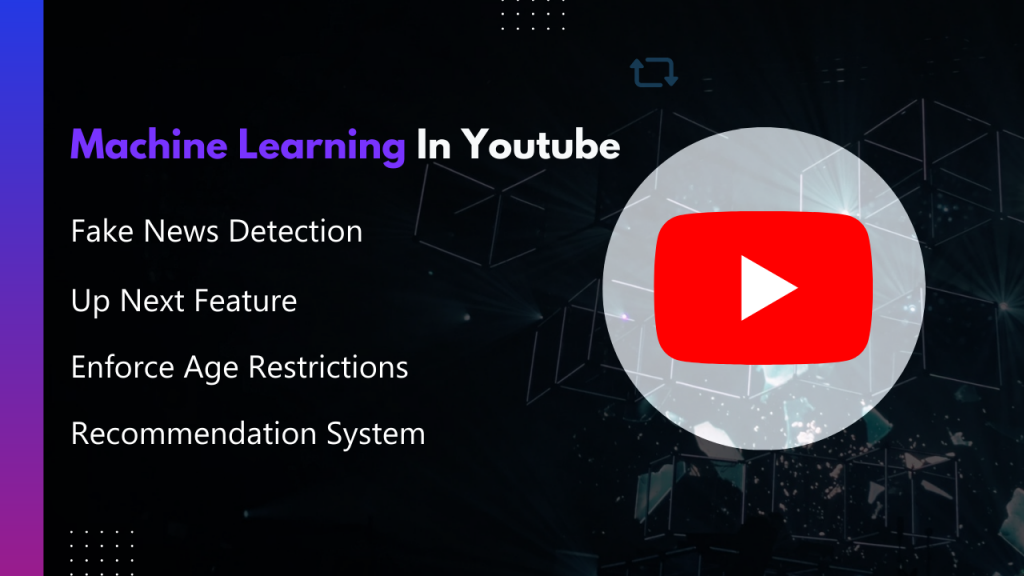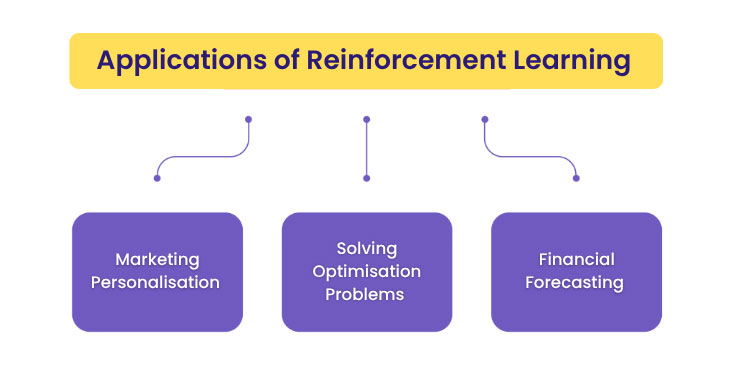It is one of the coolest fields there is. We use machine learning all the time and Machine learning engineers are behind this.
It is one of the coolest jobs that you can have. And guess what, It is a field that is only going to grow.
What Is Machine Learning?
It is a subfield of artificial intelligence, which is broadly defined as the capability of a machine to imitate intelligent human behavior.
Many of us get confused About Artificial Intelligence and ML, Actually, they are not the same.
Artificial Intelligence: AI enables machines to mimic human behavior.
Machine Learning: ML is a subset of AI, That finds patterns in data through statistical and mathematical analysis to make predictions.
Deep Learning: DL is the subset of ML concerned with algorithms inspired by the structure and functions of the brain.
ML Engineers Are Behind Everything :
Youtube :

Youtube uses Ml in almost everything. Let’s look at some cases:
Dealing With Fake News :
In recent years, When Social media platforms were dealing with lots of fake news about Covid-19, Youtube had successfully deleted 11 million videos spreading false information using Machine learning.
Up Next Feature :
The auto-play feature on YouTube enables a ‘lean back’ experience and keeps videos playing without you having to select a new video when the video that you’re watching finishes.
Enforce Age Restrictions :
YouTube has recently announced its plan of adopting an advanced AI for ensuring that youngsters don’t get to stream videos that have been created for a mature audience.
Until presently, the platform had requested its creators themselves to flag their videos with age restrictions, resorting to adopting the algorithm for flagging the videos only in extreme cases. Now the platform plans to adopt a likewise machine learning algorithm for focusing on what would be suitable for certain age groups.
Recommendation System :
Recommendations help you discover more of the videos that you love, whether it’s a great new recipe to try or your next favorite song. Youtube shares recommendations both on YouTube’s homepage and in the ‘Up next’ section as a suggestion of what to watch next when you’re watching a video.
We’re constantly testing, learning, and adjusting to recommend videos that are relevant to you. We take into account many signals, including your watch and search history (if enabled) as well as the channels that you’ve subscribed to. They also consider your context, such as your country and time of day. For example, this helps us show you locally relevant news.
How can you become a machine learning engineer?
We all know the basic premise of artificial intelligence. AI is how machines are able to learn from their environment and increase intelligence over time. Most people were introduced to the whole idea through Hollywood cinema, which has given us a bleak look at the scary potential of what could happen with AI in the wrong hands, but many watching 2001: A Space Odyssey decades ago were not aware that that artificial intelligence has been around, at least in simplified form, since the 1950s.
AI is a broad field encompassing many different applications, and it is now being employed on a large scale in a variety of organizations. As defined today, machine learning is one subset of AI that works with big data applications and is accomplished through advanced mathematics and software programming.
By far the most prominent use of machine learning (ML) is in business. Customer-facing businesses of all types are employing machine learning to better understand customer tendencies and preferences and apply marketing and advertising strategies that accurately and effectively target these tendencies.
The goal of machine learning is to program computers to accept real-world data from real people utilizing technology and determine from that data the person’s likes and tendencies. These results are then employed to place the most relevant advertisements in front of the customers.
Facebook is probably the most publicly obvious example of a machine learning user. Account-holders on Facebook have become all too aware of the ads being targeted directly at them for everything they do. And not just on Facebook. Buy something, or even search for it on Amazon and you’ll soon see an ad for that item on your Facebook account.
Artificial intelligence and machine learning have only begun to be widely used in the last 10 to 20 years. The recognition of what machine learning can provide in business is still spreading. Machine learning job growth is expected to be among the most rapid in any industry for the foreseeable future, so prospects are very bright.
ML engineering is not an entry-level career option. It takes years of experience in data science and software engineering, as well as an advanced college degree, to become a machine learning engineer. This guide provides an overview of the machine learning engineer role and lists the steps required to begin and maximize career success. Included is a detailed list of job responsibilities, background, education, and experience required to be successful professionals, as well as salary information, and the future outlook for the ML engineering job market.
What is a Machine Learning Engineer?
Machine learning is a form of AI that enables a system to learn from data rather than through explicit programming. Once an ML program is written, it must be “trained” before it is deployed in its intended use. Training is the process by which the machine learns. The programming utilizes algorithms that ingest training data supplied by a machine learning engineer, making it possible to produce more precise models based on that data.
A machine learning model is the output generated after a machine learning algorithm is trained with data ingestion. Once trained, when a machine learning model is fed real-world data, it produces an output. A predictive algorithm will create a predictive model. When the predictive model is provided with data, it puts out a prediction based on the data that trained the model.
Through its training and iterative online learning, a machine learning model can vastly improve its understanding of the types of associations that exist between data elements. Due to their complexity and size, these patterns and associations would be easily overlooked by human observation. Machine learning techniques are required to improve the accuracy of predictive models. Depending on the nature of the business problem being addressed, there are different approaches based on the type and volume of the data.
A machine learning engineer must understand each of these approaches, as well as how and in what situations to apply them. The four basic approaches utilized are supervised learning, unsupervised learning, reinforcement learning, and deep learning. The difference between these approaches lies in the data to be used to create a learning model. Supervised learning is used with data already supplied with labels, for example, identifying animals from new images.
Unsupervised learning is used with unlabeled data and is often used to identify spam or junk emails using unidentified elements within the email. Reinforcement learning is similar to supervised learning in that it uses labeled data. However, reinforcement learning is done without the benefit of training data, instead of improving its modeling via trial and error from real-world data. Deep learning incorporates neural networks to learn from data in an iterative manner. It is especially useful in learning patterns from unstructured data in applications such as speech and facial recognition.
A machine learning engineer must have advanced knowledge of mathematics to recognize different types of data sets and be able to define at least rudimentary patterns and tendencies in the data. Utilizing a machine learning platform, such as IBM, Microsoft, Google, and Amazon, and ML engineer must then utilize advanced programming techniques and algorithms to create a system capable of ingesting a particular type of data and turning it into the desired modeling output.
What does a Machine Learning Engineer do?
With advanced skills in mathematics, programming, and data science, machine learning engineers evaluate data streams and determine how best to go about producing models that return polished information to meet an organization’s needs. Once the programs are written, ML engineers provide data to help the system learn how to interpret data and make predictions or draw conclusions. When the system has been sufficiently trained, it goes live in whatever setting is needed.
Machine learning engineers then must monitor the system’s performance and evaluate the data being returned by the modeling, to ensure its accuracy. In smaller organizations, machine learning engineers often double as data scientists, but in larger organizations, the two professionals work collaboratively to provide clean data and create an optimal machine learning system that data scientists will then utilize to deliver required data.
The tools of the trade are the machine learning platforms, which are then utilized as the foundation for complex programs that ingest data and learn how to make the most accurate identifications, predictions, or whatever other modeled output is required. Programming languages most commonly used include, but are by no means limited to the following:
- JavaScript
- R
- Scala
- Julia
Machine learning engineers must also have strong familiarity with the standard algorithms utilized for programming and modeling. Customized algorithms are sometimes required, or just alterations to the standard algorithms, but knowledge of these algorithms across the four basic approaches (supervised learning, unsupervised learning, reinforcement learning, and deep learning) is critical. Some of the most widely used algorithms include the following:
- Decision trees
- Naïve Bays Classifications
- Ordinary Least Squares Regression
- Logistic Regression
- Support Vector Machines
- Ensemble methods
- Clustering algorithms
- Principal Component Analysis
- Singular Value Decomposition
- Independent Component Analysis
ML engineers must also record their processes and results and report findings to their own organizations, and sometimes outside stakeholders.
Conclusion :
You Can also be a machine learning engineer. All you need to do is to learn the skillsets.
We have grown and earned many badges in this field in the past 3 years and are offering our courses to you.
You can go through our Course from here. Good Day.






